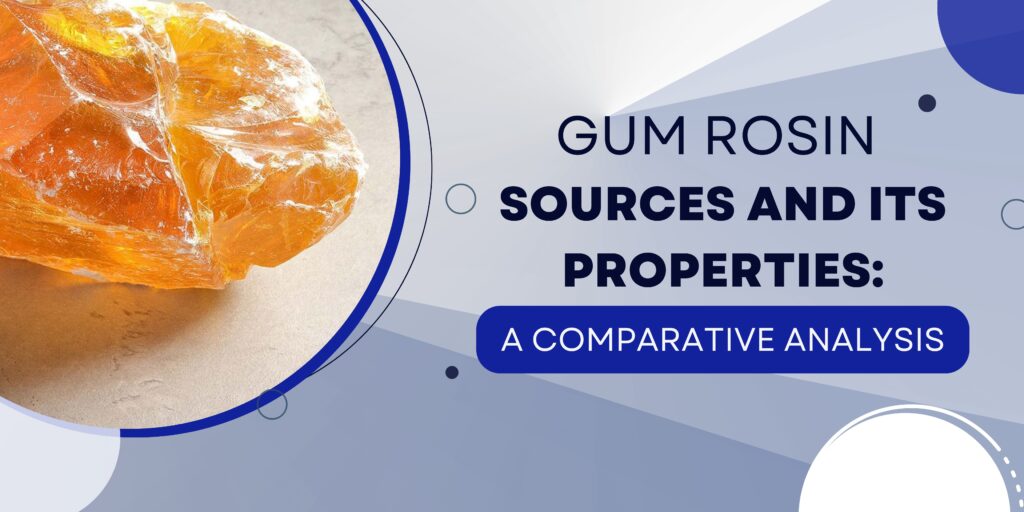
Gum rosin, a natural resin derived from pine trees, holds a significant position in various industries due to its versatile properties and applications. In the paper and pulp industry, gum rosin plays a crucial role as a fundamental raw material, influencing the quality and properties of the final paper products. This article explores the importance of gum rosin in the paper and pulp industry, its characteristics, extraction process, and how it contributes to the production of high-quality paper and related products.
Understanding Gum Rosin
Gum rosin, also known as colophony, is a natural resin obtained from the oleoresin of pine trees, primarily of the genus Pinus. The extraction process involves tapping the living pine trees to collect the resin, which is later processed to yield gum rosin. The primary components of gum rosin include resin acids, neutral compounds, and impurities like water, fatty acids, and non-volatile organic compounds.
Characteristics of Gum Rosin
Gum rosin exhibits various characteristics that make it suitable for applications in the paper and pulp industry:
- It is amorphous and brittle.
- It has a light color, ranging from pale yellow to amber.
- It is highly adhesive and tacky when melted or dissolved in organic solvents.
- It has a relatively low melting point, making it easily workable in various industrial processes.
Role of Gum Rosin in the Paper and Pulp Industry
Enhancing Paper Quality
Gum rosin is added during the papermaking process to improve paper quality by enhancing its strength, flexibility, and resistance to moisture. Rosin sizing improves the internal bonding of fibers, resulting in stronger and more cohesive paper.
Improving Printability
Rosin sizing aids in achieving optimal printability by improving ink holdout on the paper’s surface. This is particularly important in the printing and publishing industry, ensuring high-quality prints with sharp and vibrant colors.
Gum Rosin in Papermaking Process
Rosin Sizing
The papermaking process involves rosin sizing, where gum rosin is used to treat the paper pulp. The rosin sizing solution is mixed with the pulp to enhance the paper’s properties, especially its resistance to liquids and the ability to retain its shape during printing.
Neutral Sizing
Rosin can also be chemically modified to produce alkyl ketene dimer (AKD), a common neutral sizing agent. Neutral sizing improves paper’s resistance to water without affecting its optical properties.
Sustainable Extraction of Gum Rosin
Environmentally Responsible Extraction
Sustainable extraction methods are employed to ensure responsible sourcing of gum rosin. These methods involve careful tree tapping techniques, allowing the pine trees to regenerate and continue producing resin sustainably.
Environmental Impact Considerations
Balancing the economic benefits of gum rosin extraction with its environmental impact is crucial. Proper forest management, reforestation efforts, and adherence to sustainability standards are essential to minimize the industry’s footprint on the environment.
Advancements in Gum Rosin Technology
Modified Rosin Derivatives
Recent advancements have led to the development of modified rosin derivatives to improve its properties and tailor it for specific applications. These derivatives may include esterified rosins, hydrogenated rosins, and disproportionated rosins, each offering enhanced characteristics like better stability, increased melting point, or improved adhesion.
Rosin-Based Nanomaterials
Researchers are exploring the potential of utilizing gum rosin to create nanomaterials with unique properties. Rosin-based nanoparticles and nanocomposites have shown promise in various applications, including reinforcing paper and enhancing its mechanical properties.
Challenges and Future Directions
Supply Chain Challenges
The availability of pine trees, the primary source of gum rosin, can be affected by factors such as climate change, deforestation, and land-use changes. Ensuring a consistent and sustainable supply of pine trees for gum rosin extraction is a challenge that requires proactive management and conservation efforts.
Environmental Concerns
The paper and pulp industry, including its use of gum rosin, must continually address environmental concerns. This involves minimizing the environmental impact of resin extraction, exploring eco-friendly extraction methods, and adhering to stringent environmental regulations.
Future Prospects
In the future, gum rosin is expected to continue evolving and finding novel applications in the paper and pulp industry. Sustainable extraction practices, innovative technologies, and ongoing research will likely contribute to the efficient use of gum rosin, ensuring a sustainable and eco-friendly approach to paper production.
Conclusion
Gum rosin remains a vital component in the paper and pulp industry, enhancing paper quality, printability, and specialty paper production. Its widespread applications and importance in creating sustainable and high-quality paper products make it an indispensable raw material. As the industry moves forward, focusing on sustainability, research, and innovation will be key to maximizing the benefits of gum rosin while minimizing its environmental footprint. Balancing economic growth with environmental responsibility will be the hallmark of a thriving paper and pulp industry reliant on gum rosin.




